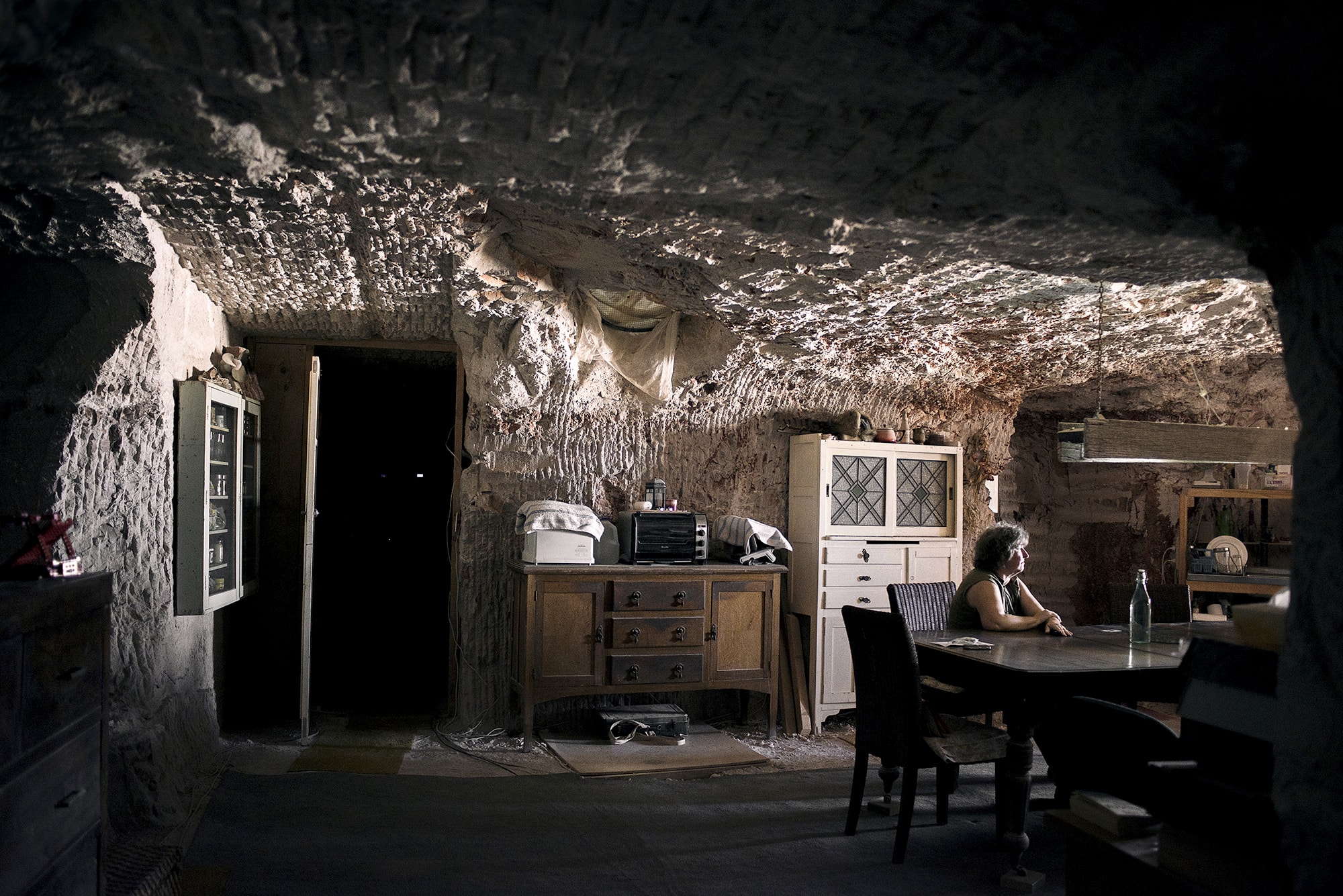
Allegory of the cave
Photographer Tamara Merino was touring Australia. She punctured a rubber from her van and had to stop in the middle of the desert to change it. “We started to fix the wheel, I looked around and realized that she was in a super strange and bizarre town,” she says. She discovered an underground population and fell in love with it. So Underland was born, a project that continued in Spain and the United States and will continue in Tunisia, China, and Mexico, among others.
Tamara was discovering that there was not only one reason to live underground: there were many. The climate, religion, culture, or even the belief that it is a way to save yourself from the apocalypse. Researching her, she also knew that there were not a few who chose it: “There are more than 60 million people who live in cave houses in many, many countries around the world,” she says. At first, it seemed strange to her to live in caves, in houses that “are alive.” But later she understood that that is what human beings do since the Paleolithic era and that it feels natural to be in connection with the earth.
Tamara is a Colombian-Chilean documentary photographer with German roots. She has published in National Geographic, The New York Times, The Washington Post, Der Spiegel, The New Yorker, 6 Mois, The Wall Street Journal, Bloomberg, among others. She is a member of Women Photograph and Ayün Fotógrafas and a National Geographic Explorer.
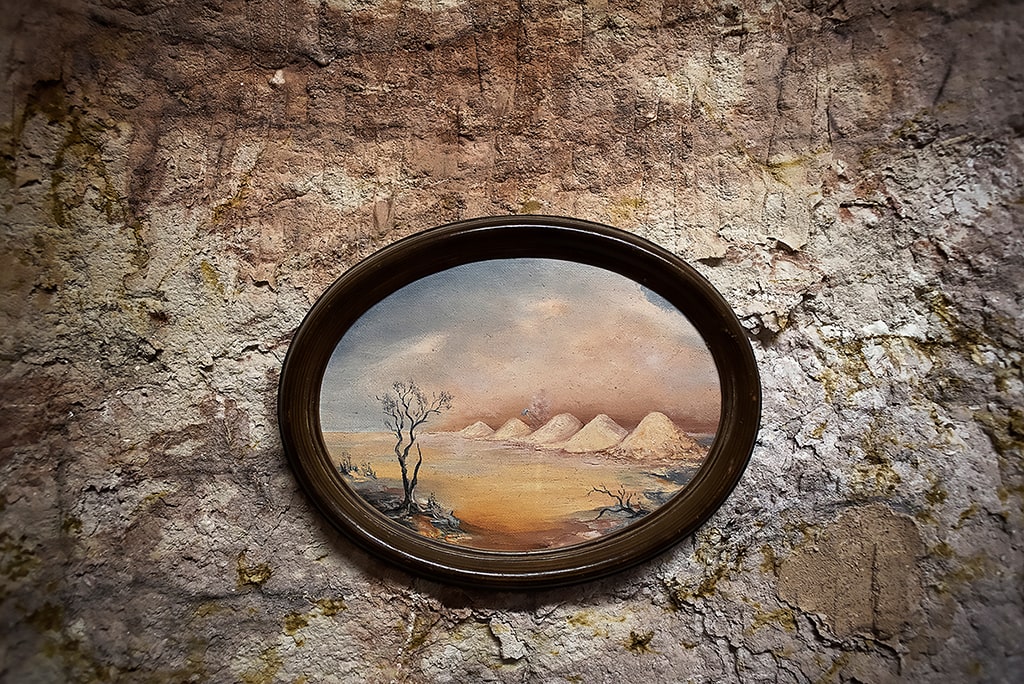
Tamara Merino – Underland Australia
–
Once the tire was punctured on the Australian road, how did that story continue?
We fixed the wheel and toured a bit. The first thing we saw was a mound with a door and a cross on it. We decided to go in and started down a red carpet. Below we find an Orthodox church. It was impressive: there were 8 or 9 candles lit on the altar, the ceiling had waves and Jesus was carved in the stone. It was beautiful, and everything was super clean and well cared for.
We realized that if there was that active community that went to this church underground, there was also an active community underground. So at that minute, I said: “We have to stay, I need to know the people who live here, I need to know why they decide to live underground and know those underground stories.” I came to understand that each community has its reason. There the project began to be put together.
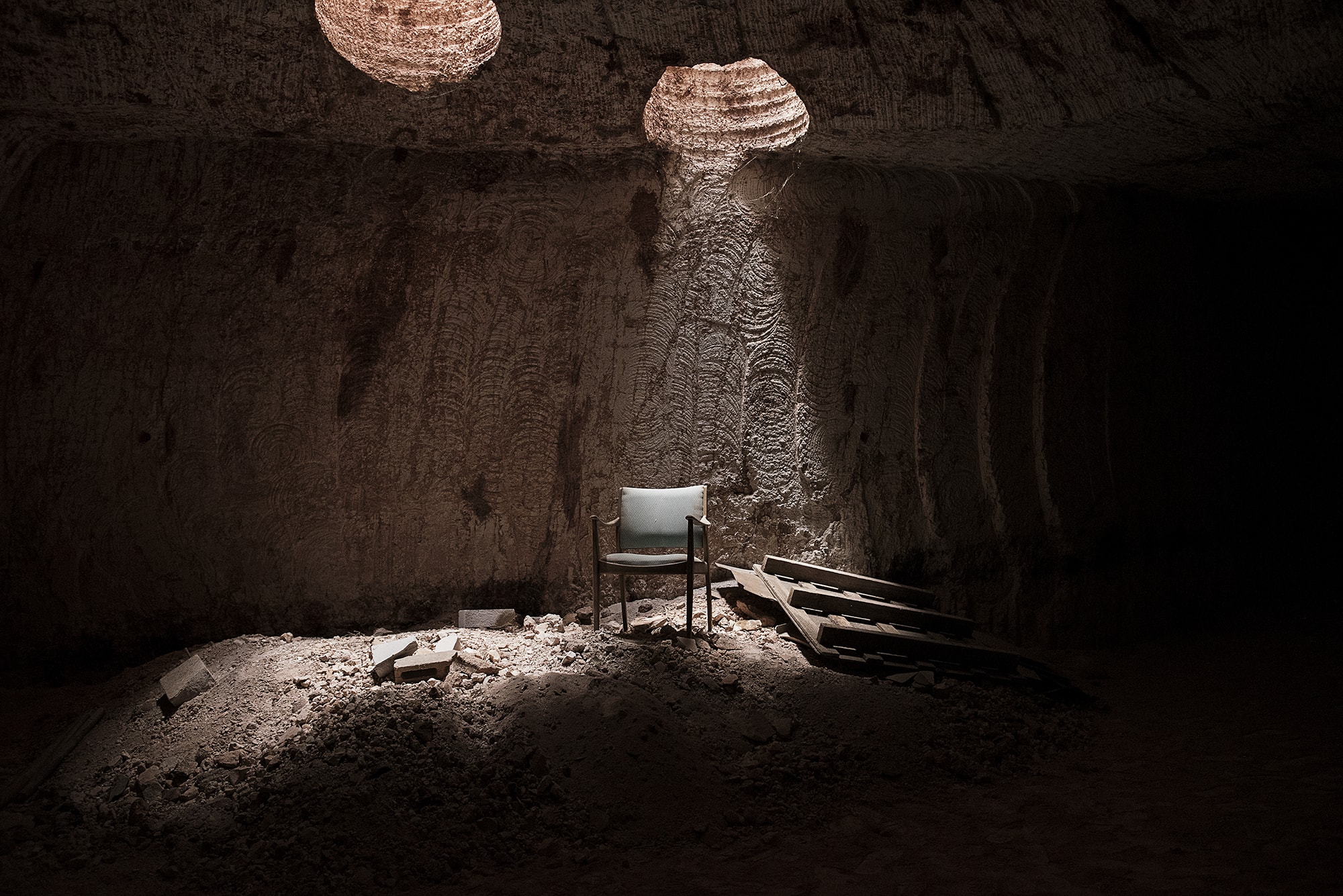
Tamara Merino – Underland Australia
In this small Australian town, called Coober Pedy, 850 km from the nearest city, most of the population lives in underground houses called dugouts and the temperatures are super high in summer. We get to have 50 degrees, while in the winter it is minus 2. That is one of the reasons why people decide to live underground. They are miners of opal, a super valued semi-precious stone that varies between 10 dollars and a million dollars because it has many varieties: there is red, blue, rainbow opal. You come to town and it’s like ghostly: everyone works and lives underground and it’s super difficult to meet someone because people aren’t wandering the streets like in a normal city or town.
Are houses and mines connected?
No, they are not connected. They have to go to the surface and drive to the mines. They are separated because of security issues. On the main road that crosses the Simpson desert, for example, there are quite a few houses on the ground, there is a gas station and the supermarket. It is practically an underground town, where around 80% of the people live underground, and all are dedicated to opal. It is a crazy and unusual life; they can be millionaires any day or find nothing for years. This gem reveals the hidden motivations of those who follow its illusion of wealth, and an atmosphere of suspicious eyes and mystery awaits those who pursue its charm. It’s like opal fever!
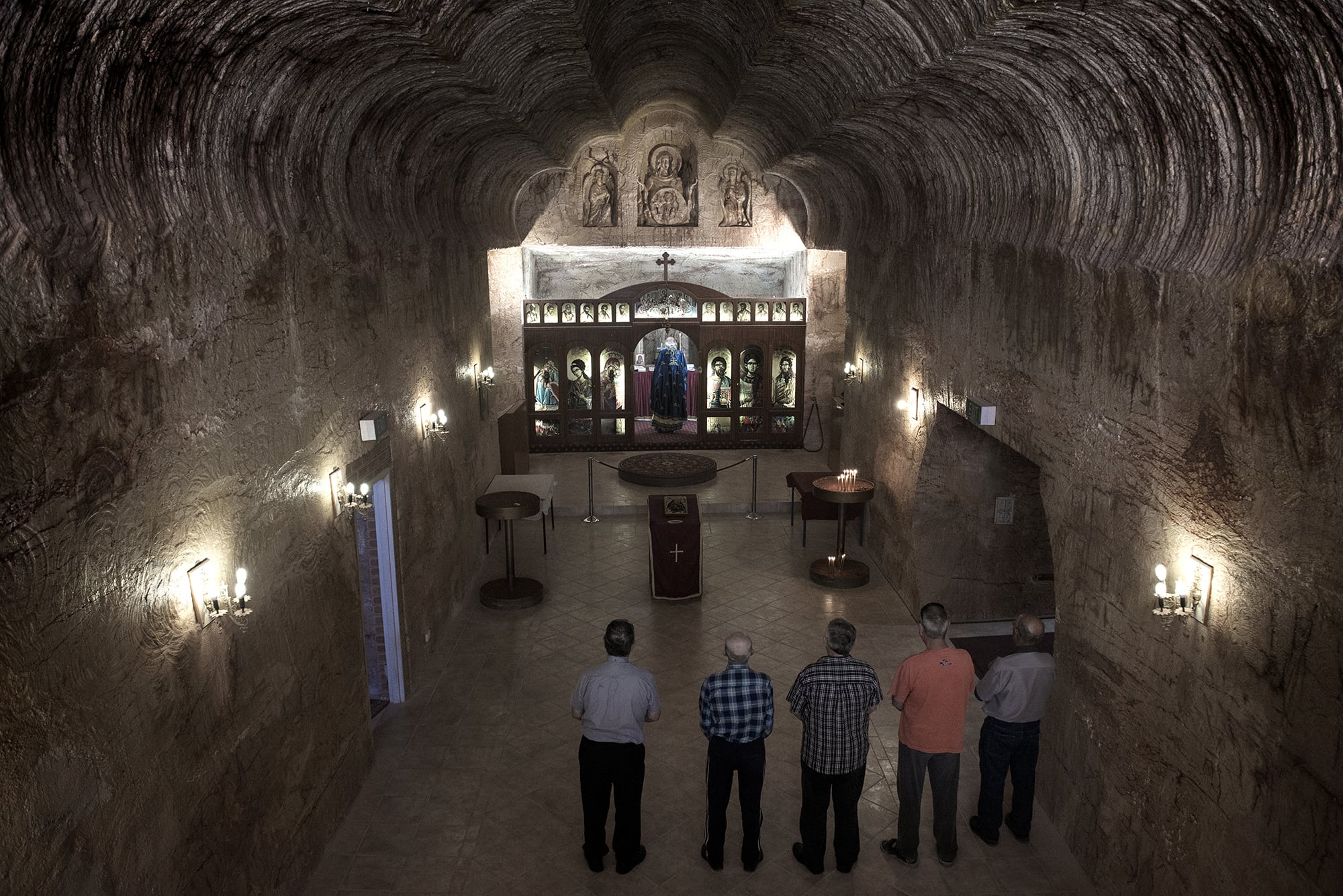
Tamara Merino – Underland Australia
Where did you stay?
At first, we were in the van. Imagine, at three in the morning it was 30 degrees hot. It was exasperating. In the desert, there are many poisonous snakes, poisonous spiders. So you can’t sleep with the windows open either. We had a hard time meeting someone at first. We walked the streets for five days without finding a soul. We walk for hours every day with our faces covered in dust and the forty-seven degrees centigrade of dry heat burning us. I felt the loneliness and the vastness of the vast desert land. On the sixth day, we met Gaby, a German immigrant who had lived there for five years. She is one of the few women miners. I also have German roots, so after a good conversation and a few words in my rusty German, we connected. Gaby and her husband invited us to stay at her house for as long as we wanted. I couldn’t believe it when I first walked through the desert door into her house… it was a cave! The forty-seven degrees of heat outside immediately turned into cool air with a pleasant twenty-three degrees Celsius. It’s amazing, they have everything, it’s like a house as we know it, but underground.
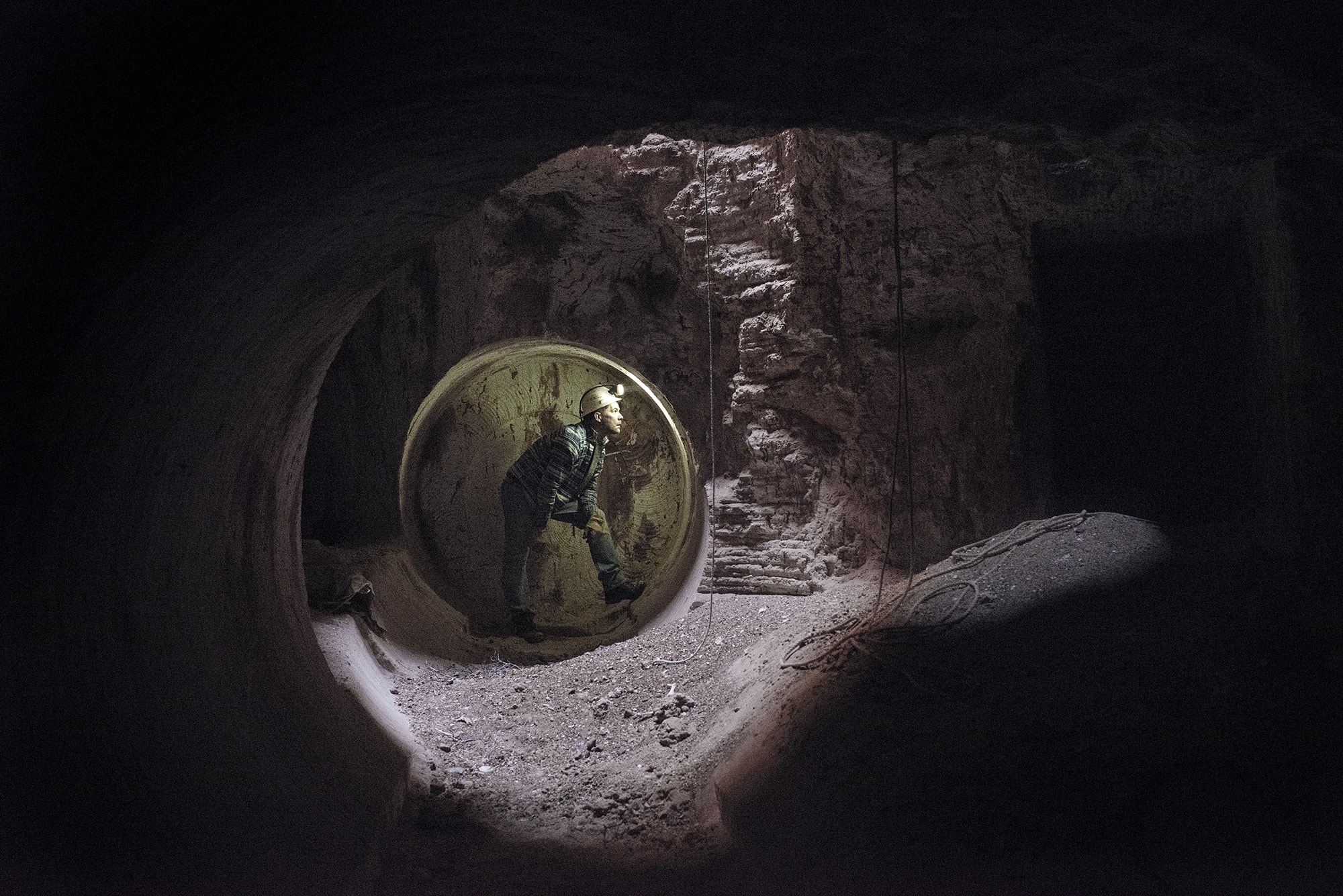
Tamara Merino – Underland Australia
Did you feel that they think about life differently?
I’m sure they have a super strong connection to their houses: their houses, in the end, are alive. They are in constant motion, they are always changing, the stone is falling, it is mutating. All human beings have a strong connection with our environment, but I feel that theirs is much more. They do not need air conditioning or heating, because the same cave gives them a constant temperature of 23 degrees throughout the year. Once the earth gives you all these benefits, you too are more aware of how you impact it.
I feel that due to excessive human impact, our world and our societies have very little awareness of the effect we have on the earth. Climate change threatens our life on earth and we have lost our cultural identity due to fast-paced technological societies. In this modern and frenetic age, these underground towns demonstrate that other alternatives are possible. Living underground is an ecological and optimistic solution for the environment, as it is completely self-sufficient and reduces the impact on the ground thanks to a practically zero carbon footprint. These underground communities are a remarkable example of how well humans can adapt to their environment to survive. All the communities that I have documented show us how we can go back to basics because today we are the ones who have to inhabit the world differently.
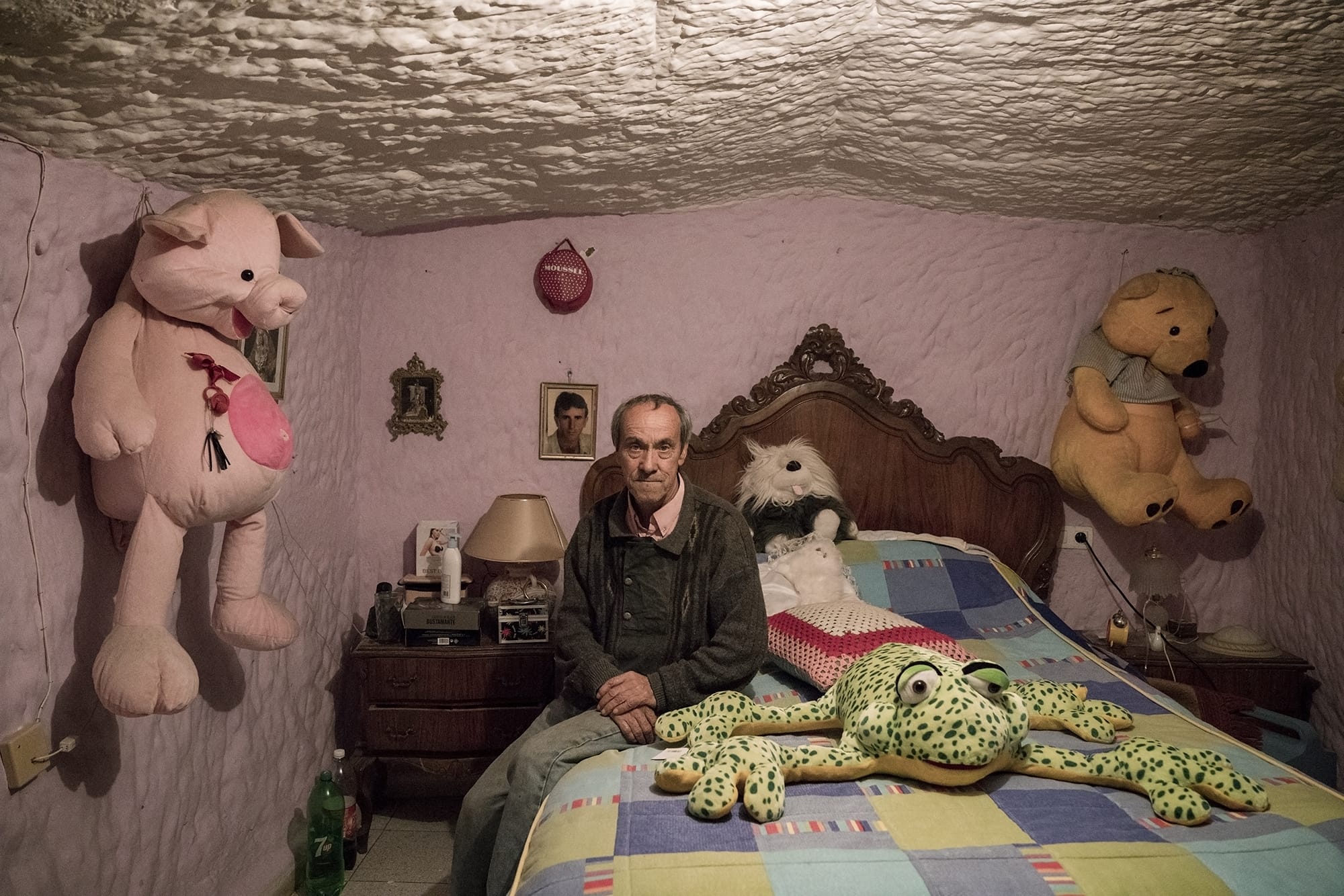
Tamara Merino – Underland Australia
How did you realize that there was a job to continue in that line?
I started meeting people, the story became super intimate and it intrigued me more and more: why did they decide to live underground? At that minute, when we came to this town, I had no idea that people lived in caves anywhere in the world. I had never questioned it. In Australia, when I woke up in the morning, my blanket was full of pebbles that had fallen from the ceiling during the night. Feeling that these houses were alive fascinated me and I said: “I need to know these underground stories”.
I always do a lot of research for my projects, I become an expert, I read all the books, I download all the papers. I discovered that more than 60 million people are living underground in many, many countries around the world, so the project expanded. I began to trace the places I wanted to visit, what were the reasons and factors that led these communities to live underground …
The first chapter is about this city in Australia that I came to by chance and then consciously chose a country on each continent. I wanted each of the towns I visited to have a different reason why they decide to live underground. This city in Australia had a climatic reason. Then I decided to go to Spain, to the largest cave settlement in Europe which is in Andalusia. There I toured the region: six different towns and a city for about three weeks.
They live in cave houses for a cultural issue, more than 500 years ago. The project took an incredible turn. I was used to seeing these underground houses in the red Australian desert and suddenly I came to Spain and I went into a cave and the caves were covered with whitewash and white. Imagine a cave, humid, with an echo, and with a super pleasant temperature. Many of them are covered with amazing wallpapers and have photos, hanging pots, amazing decorations. Visually it is wonderful.
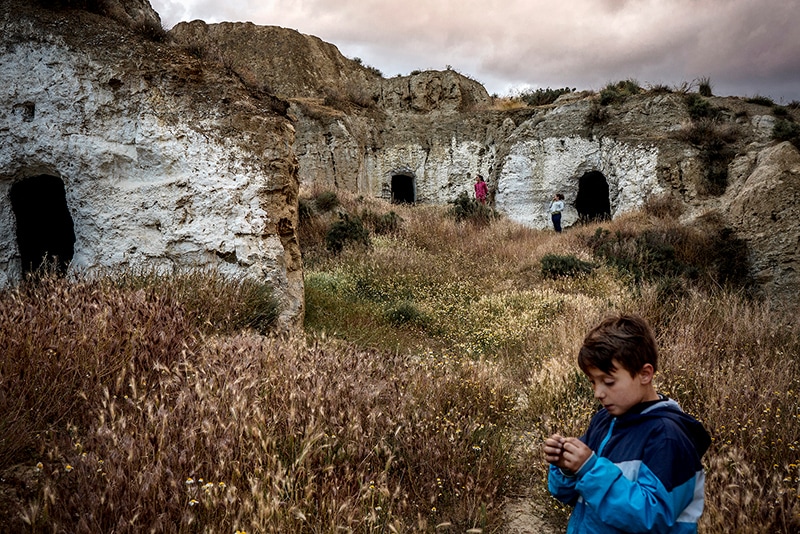
Tamara Merino – Underland Australia
So I did the same: meet people, start documenting their daily lives, their relationship with the earth, how they impact the environment, and how they feel living this way. I realized that these communities are super proud. Their grandparents, their parents, their great-grandparents were born this way. They say: “I was born in the caves and I am going to die in them.”
There are two theories as to why there are caves there. One accounts that when building the Alhambra Palace, Muslim Arabs brought slaves from North Africa to build it, who in turn sought a home in the mountains surrounding the castle to stay. These slaves brought the tradition of the North African troglodyte communities in which they lived. Other theories say that the caves date back much earlier, and they also lived there for religious reasons. The gypsies who also have these nomadic customs began to inhabit these caves, and incredibly the traditional dance of flamenco was born in these caves more than 500 years ago.
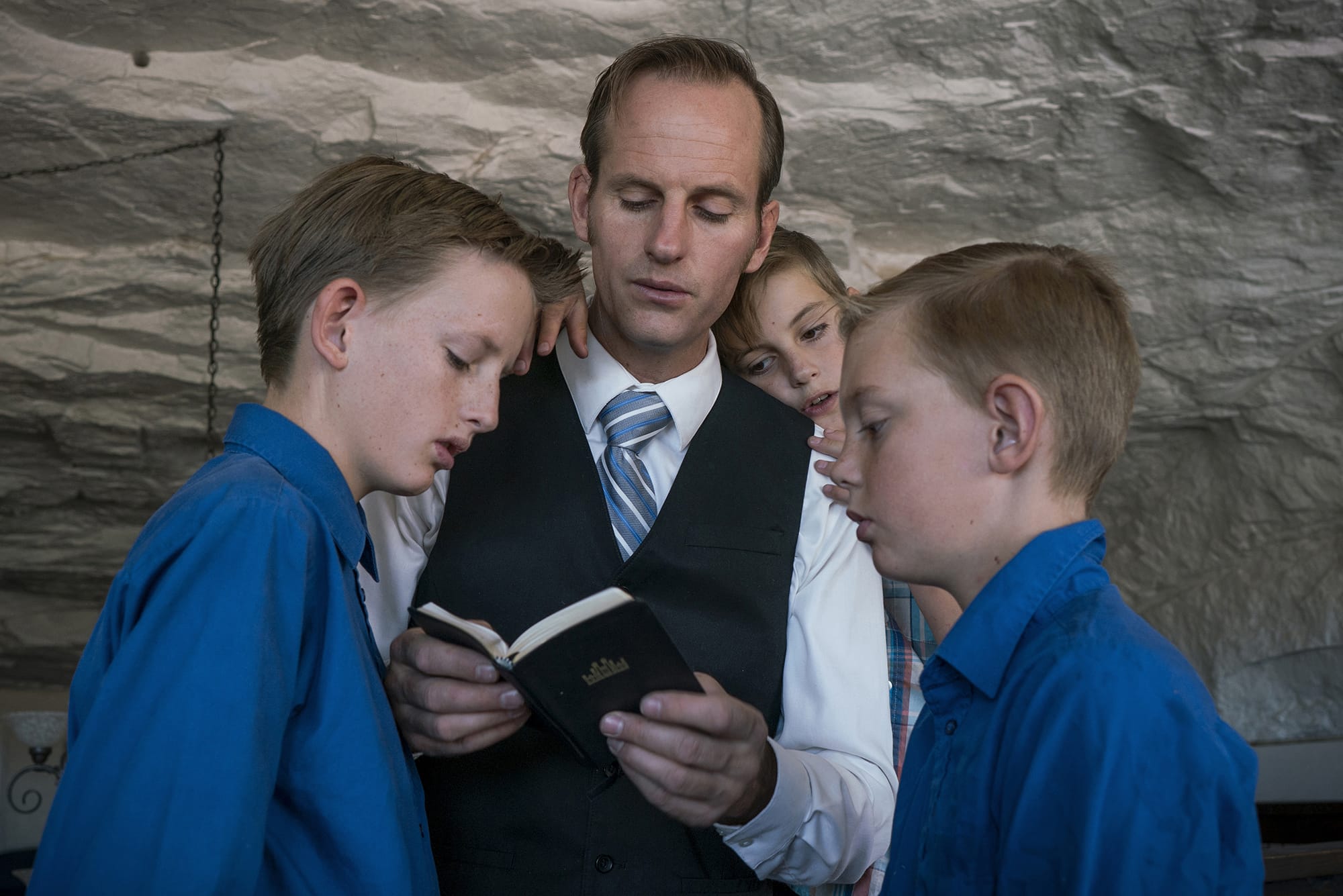
Tamara Merino – Underland Australia
When inhabiting the caves, what did you feel?
I soaked myself in the darkness of the underground houses, and my eyes quickly adjusted to it. It is like going back in time. I understood that caves are our first home as human beings. In fact, in the Paleolithic era, we occupied the caves that already were made and in Neolithic times we started digging caves to live. Today it is that same reason for protection, isolation, home, which has always made us continue to live in caves. It’s a bit of going back to our roots.
We see it as something strange but the truth is that human beings have always sought protection and a sense of security. Although we all inhabit the globe in different ways, we all have a strong relationship with the environment around us. To be very honest, at first, it was something that I could not understand: why did we decide to live underground since I am always looking for the light, the open and illuminated places? But the truth is that this has been our way of inhabiting the world since prehistoric times. It is something supernatural.
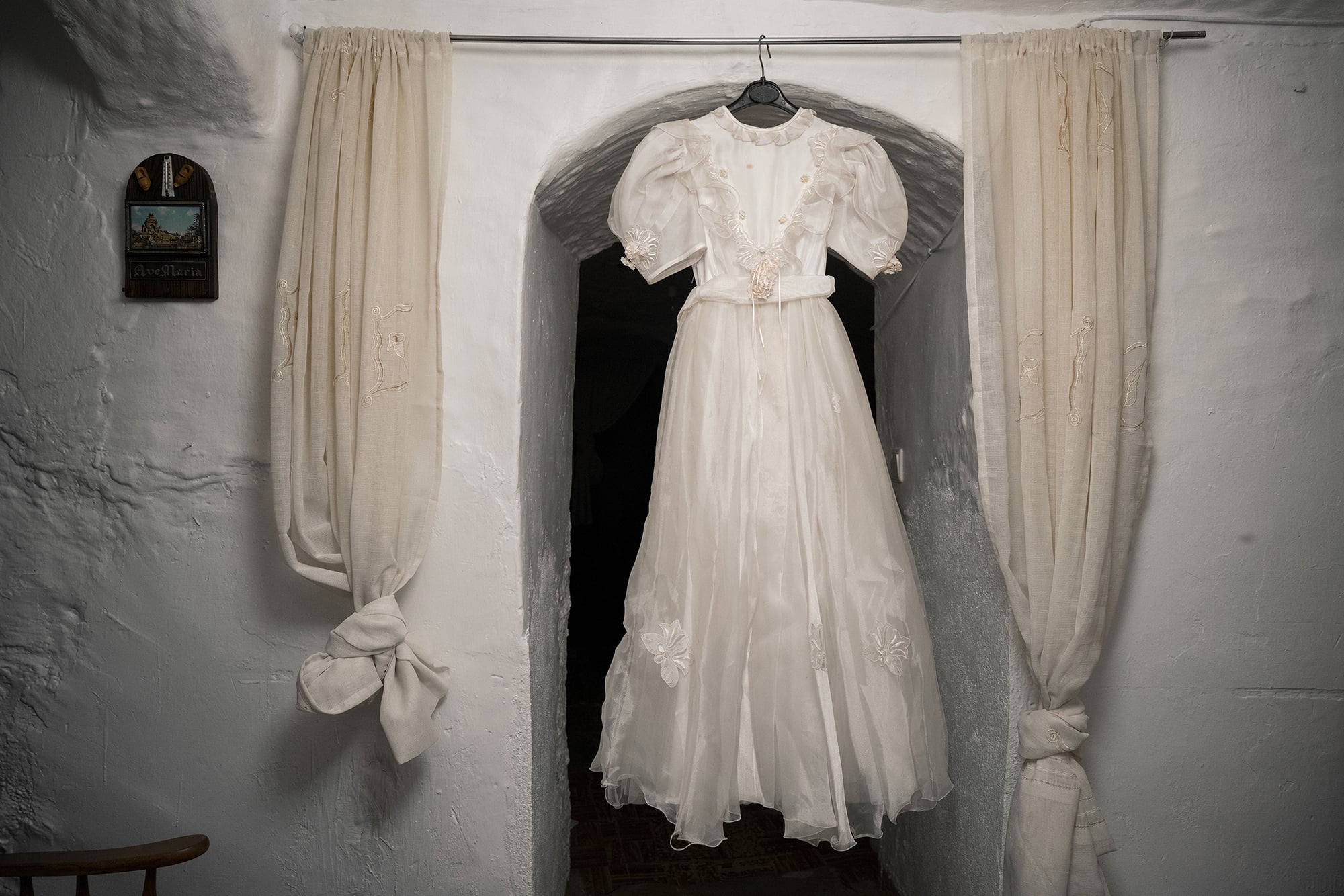
Tamara Merino – Underland Australia
And the third site? How did you get to it?
After Spain, I went to the United States, specifically to the Utah desert, where a polygamous and Mormon community lives. At that time, there were sixteen families and approximately 150 people. There are two or three women per family and many children: some of the households have between 12 and 25. They live this way because they believe that the apocalypse is coming, so this rock will protect them from any natural disaster. This community is also one hundred percent sustainable with renewable energy, having its solar panel system and natural water well on top of the rock that supplies all the families in the community.
Bob Foster, the creator of this community in the ’70s, dreamed that God told him to go find this specific rock and that he creates this community where they would survive. This rock geographically stands out a little bit from the flat terrain of the Utah desert and the idea of creating these caves is that nothing was going to be able to destroy them. The idea of this polygamous community was that they could procreate, procreate and procreate to put together this kind of “Noah’s ark”.
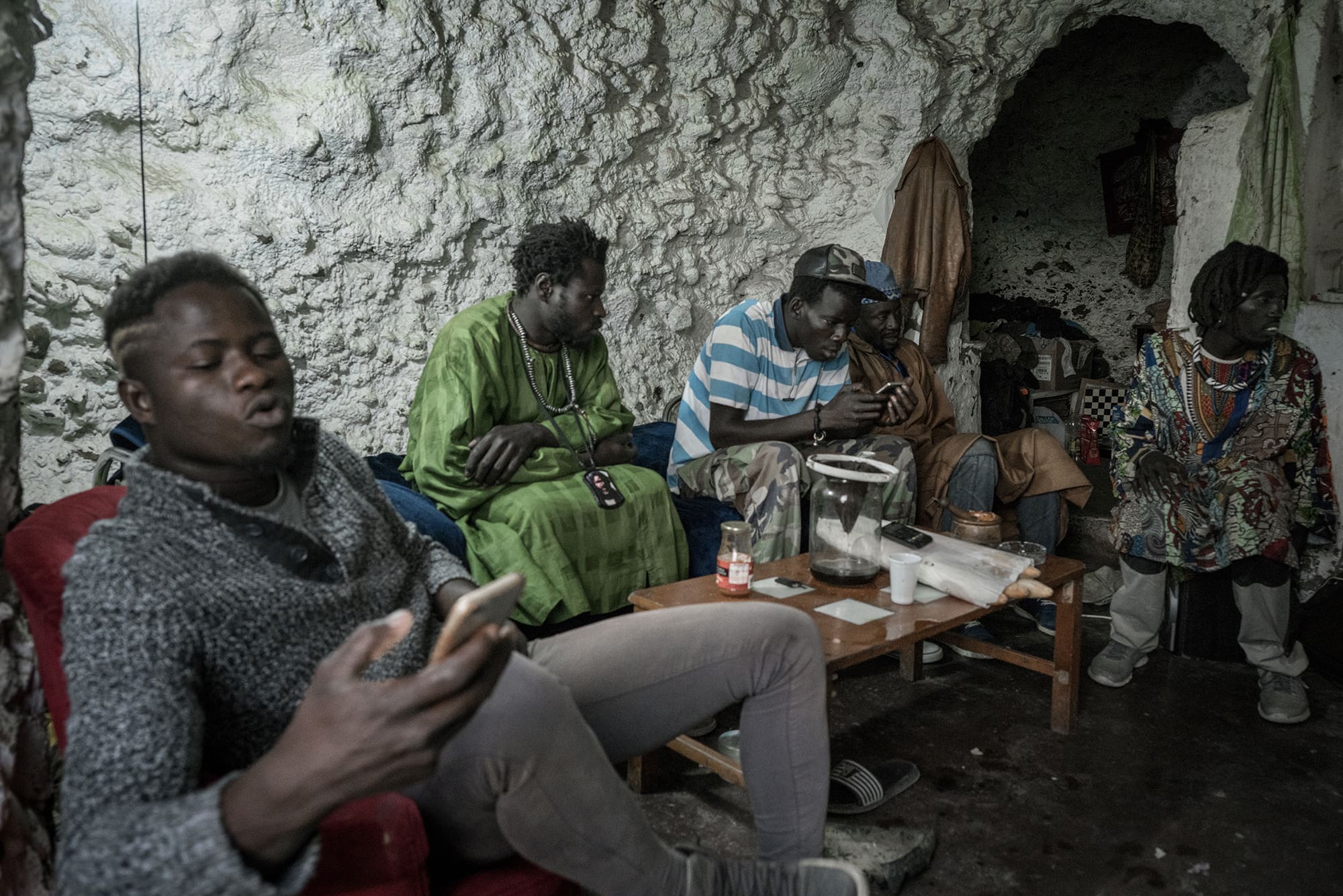
Tamara Merino – Underland Australia
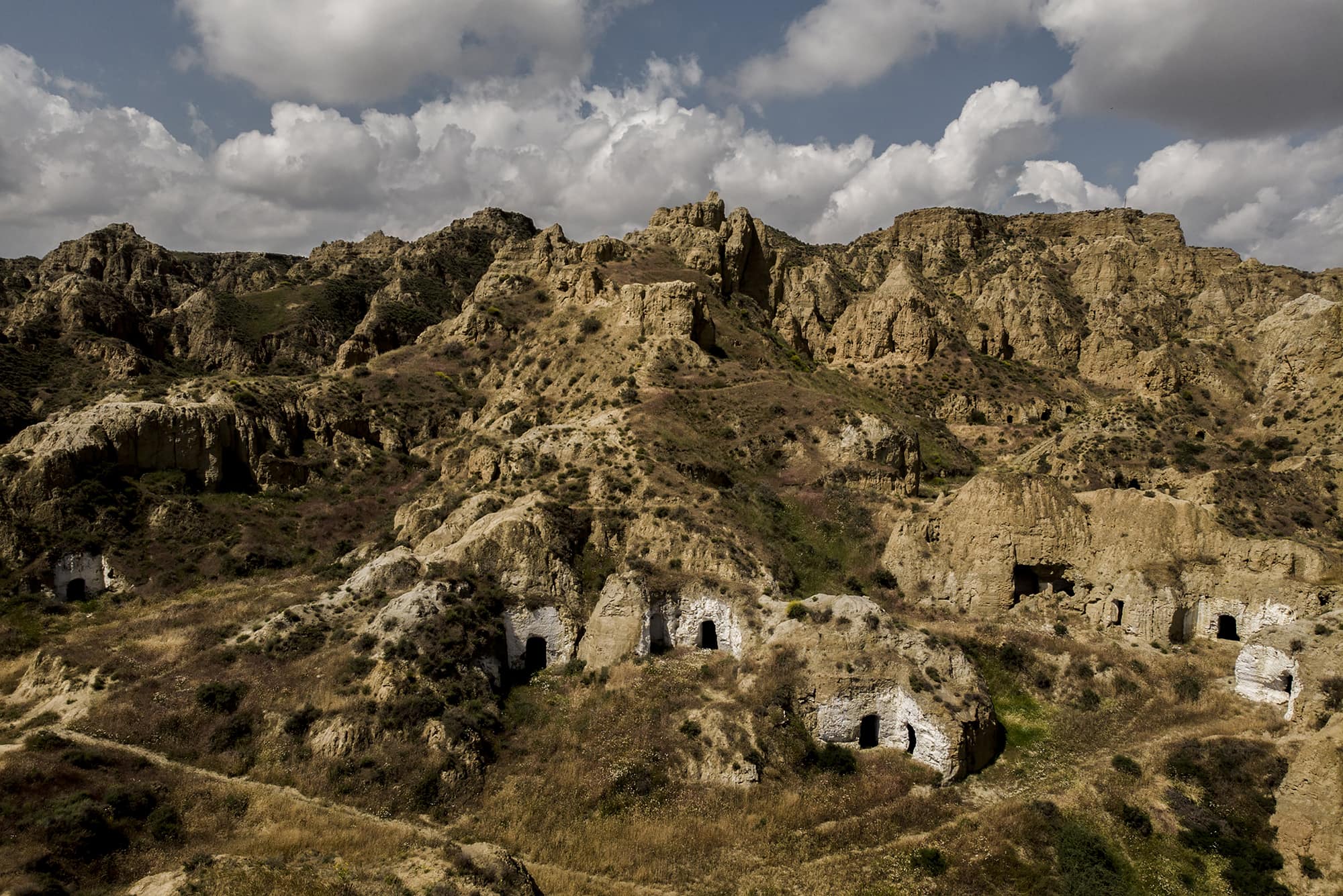
Tamara Merino – Underland Australia
He started to make the houses in the 70s with dynamite and inside they are completely different from those in Australia and Spain. They put wood inside them and make square walls for them. It is as if you are entering a conventional house, but you are entering a cave. On the outside, they also make a facade like a typical American house. Then there is this huge rock in the shape of a waning crescent and there are these 17 caves. If you look outside, you see this giant red, imposing rock and this fake house front. It is super visually stunning.
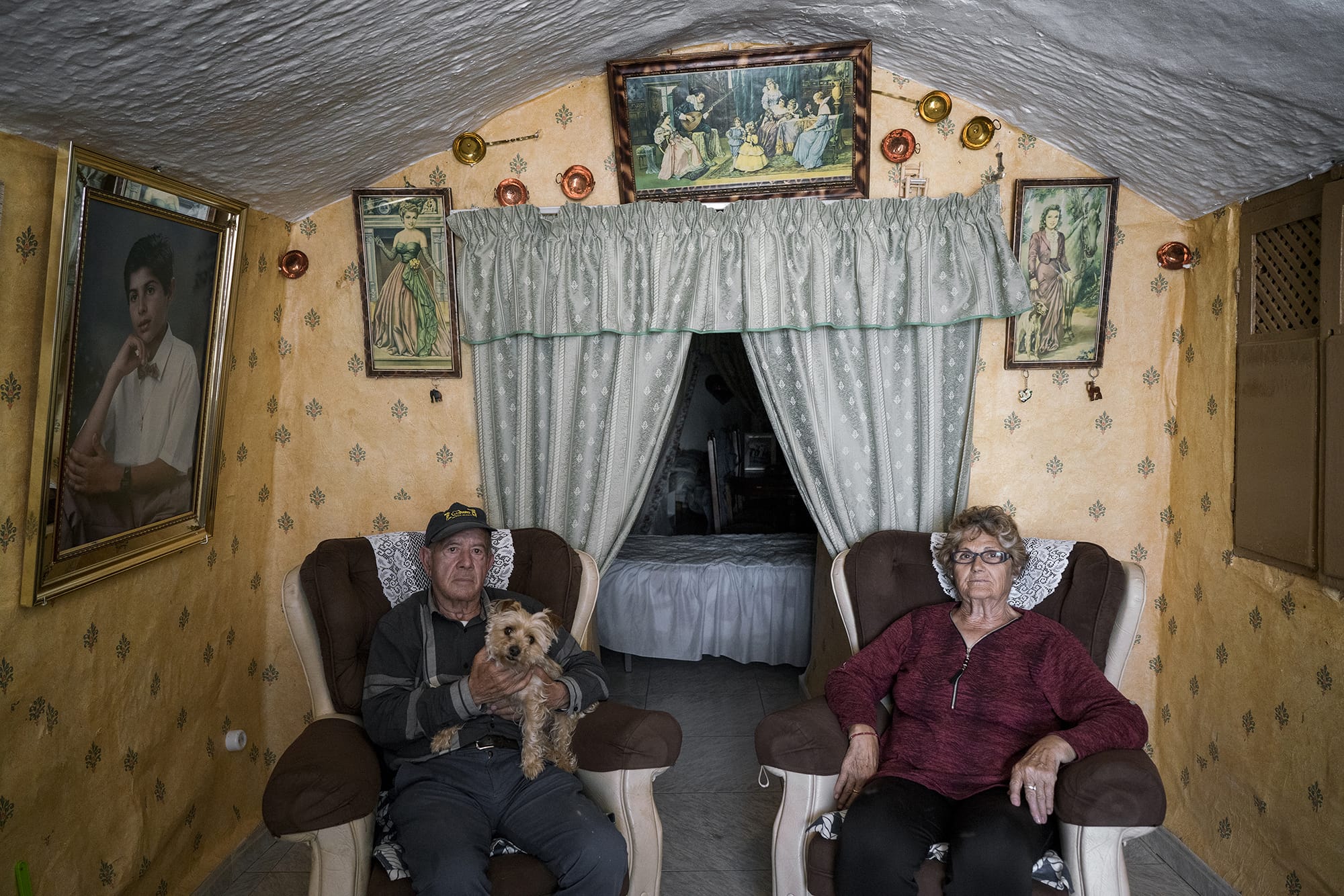
Tamara Merino – Underland Australia
Is there a next destination?
If it had not been for the pandemic, in 2020 I had my ticket to Tunisia ready in Matmata, in North Africa. It is a community that lives in caves, within craters in the desert. They have lived there for religious reasons for more than 1000 years. The other chapter is in Mexico, and the other is China. There I have these first communities on each continent. The project will have approximately 12 locations in different parts of the world, it has been published in National Geographic by chapter. As soon as the pandemic allows it, I will continue, to illustrate the human condition and the important relationship between human beings and the environment.